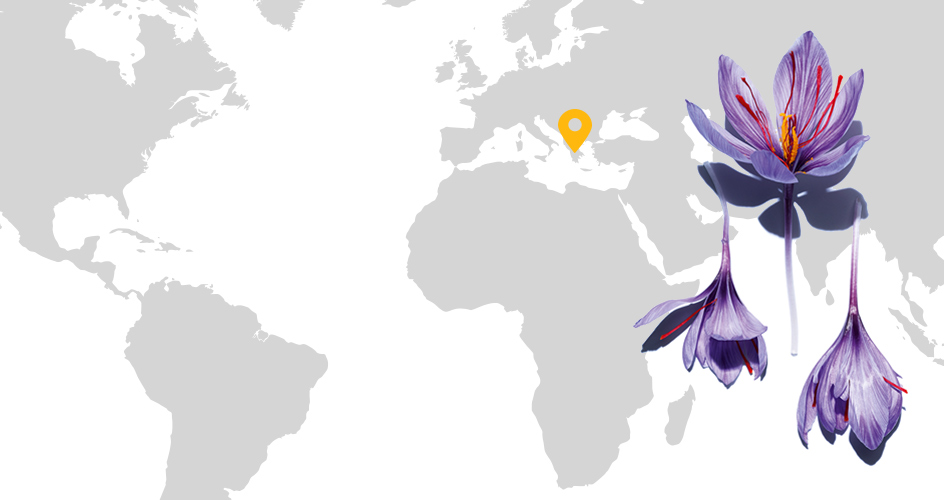
Saffron Flower
Crocus sativus
Greece
This herbaceous plant grows to a height of 10-30cm and is dark purple in color. The plant’s flowers have six petals and bloom in autumn. They have three stamens with yellow anthers and a style divided into three dark red thread-like stigmas with an aromatic fragrance. They have a slightly bitter flavor. The famous saffron spice is collected from these stigmas. This plant secretes nectar from its corolla’s tube that bees readily collect, along with the pollen from its stamens. Growing the crocus flower for its saffron originated in ancient Greece and across Asia. Ancient texts mention this spice. The Arabs brought it to Spain from Asia minor in the 10th century before being introduced in France during the Crusades in the 12th century. This precious spice is the most expensive in the world! lt is used to season dishes like fish-based bouillabaisse from Marseille, Spanish paella and traditional Easter brioche. In traditional medicine, saffron is used to fight scarlet fever, smallpox, colds, insomnia, depression, asthma and tumors. It is also an important ingredient in Ayurvedic medicine. Applied externally, saffron makes it possible to treat bruising, eye infections, burns, eczema, etc. It calms pain, dissipates inflammation and to a certain extent, promotes skin healing. In cosmetics, saffron polyphenols help regulate the skin’s microbiota.

